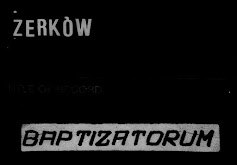There is a lot which can be learned about genealogical research by reading about marketing techniques. I already realized that, but I don't think I really felt it, deep down in the core of my being, until I stepped through this impromptu research goal for the last week of November.
I stood a lot to be gained by this McClellan cousin connection unfolding over the past few days. Information on ancestors, yes. But more than that, I gained some insight on just what these McClellan ancestors were really like. I got to hear the stories captured in the memories of their now-aging descendants. And I realized something: the way to inspire others to fall in love with their ancestors is really through their stories—but not just any stories. The stories which captivate, which trigger an emotional response, which draw others in, rather than away, are the ones we need to highlight.
The marketing advice is this: when you write or talk, focus on key words which trigger an emotion. Let that key word or phrase be the theme of the vignette you are sharing. What resonates with your relatives? How can your ancestor's story harmonize with that?
Of course, to accomplish that, you need far more than just the dates and places where your ancestors were born, married, or died. It may require you to become familiar with local history, or to read between the lines on key events in an ancestor's timeline. To say, for instance, the family moved first to Oklahoma, then after a while moved to California is far less interesting than to say your destitute ancestral couple and their ten children had just plunked down their last few dollars on their mortgaged farm in Cimarron County, farthest west portion of the Oklahoma panhandle, when the Dust Bowl conditions caused them to lose all. Names and dates we have trouble relating to, but losing everything in the face of a natural disaster is a story evoking memories of our own tragic experiences. When we hear stories full of emotional experiences, then we can relate.
It has been an eye-opening experience for me, getting my older cousins to talk about their childhood memories of the grandparents, grand-aunts and -uncles whom they knew personally in their younger years. Of course, I am interested in gathering such stories of relatives I never met, but that is because I am interested in family history—I assumed. But I have come to realize that it is stories of this sort which we can use to get others in the family interested in our heritage, as well. We need to focus on those words, those stories which trigger emotions—memories of exceptional challenges, near-misses, deep feelings. Very few people can relate to names and dates, but we all have had experiences we'll never forget. Those are the keys to introducing vignettes of our heritage to the rest of our family, of providing the link to connect us with the strangers who were once our ancestors.






